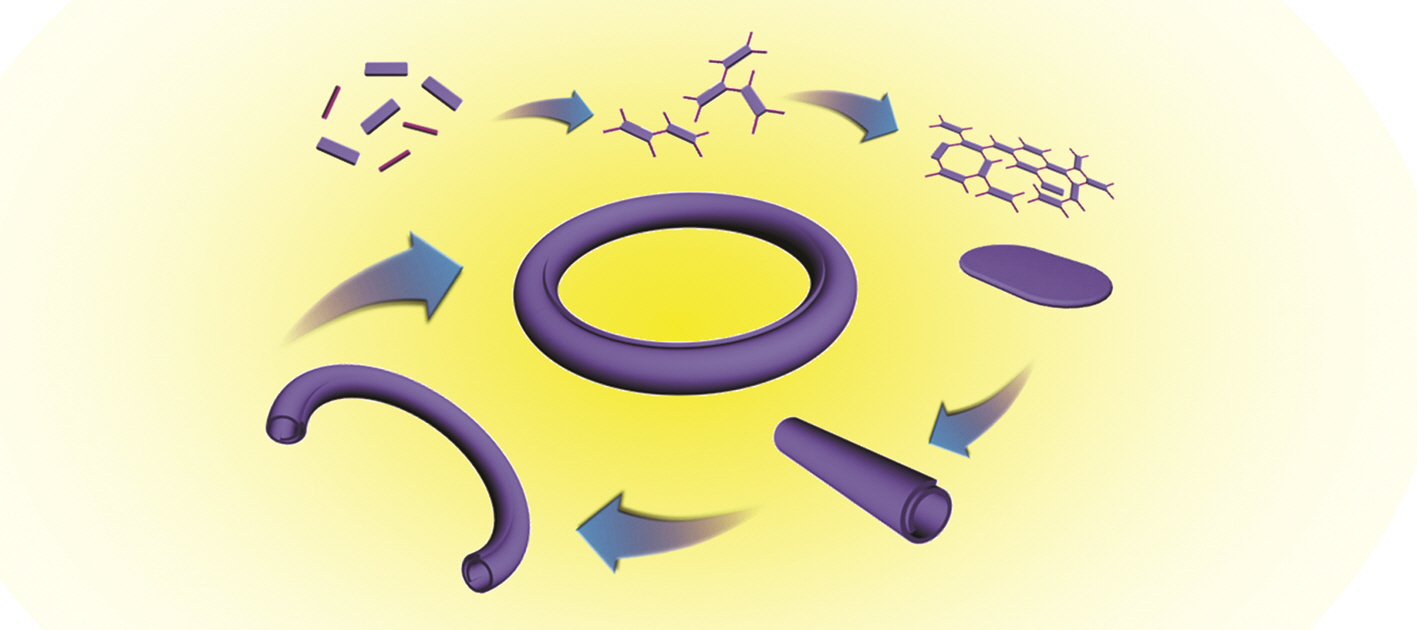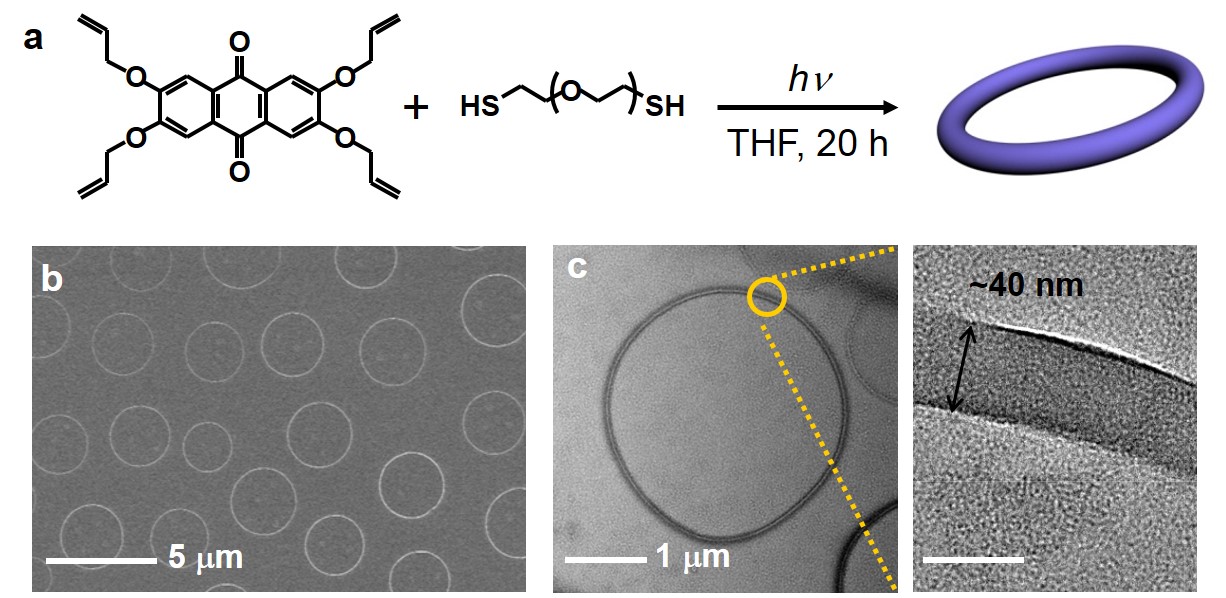mainmenu
Research Highlight
Self-organization of Hollow nanotubular Toroidal Polymer Microrings
1. Self-organization of Hollow nanotubular Toroidal Polymer Microrings
Despite the remarkable progress made in the field of nano/mesoscale architectures, the synthesis of hollow toroids with well-defined sizes and shapes via self-assembly or selforganization has proved to be elusive thus far. In this study, for the first time, the direct synthesis of hollow nanotubular toroidal polymer microrings through the self-organization of rectangular tectons with anisotropically predisposed functional groups has been demonstrated.
The topology of nano/mesoscale structures plays a crucial role in defining material properties and also determines their important microscopic properties. It is thus highly important to control the topology of such structures for synthesizing functional materials with desired properties. Selfassembly of such nano/mesostructured materials via noncovalent interactions has been well established; however, little is known about the self-organization of nano/mesostructures via covalent bond formation reactions.

Recently, we have developed the direct synthesis of polymer hollow spheres and single-layered polymer sheets, involving shape-directed self-organization of highly symmetric tectons with laterally predisposed functional groups. On the basis of these results, we used new rectangular tectons with anisotropically predisposed functional groups to construct higher-order nano/mesostructured materials with different topologies. Surprisingly, we discovered the spontaneous formation of hollow microring structures, which are shape-persistent and mechanically robust in solutions, through a thiolene 'click' reaction without any aid of templates or pre-organization. Mechanistic studies have revealed that the self-organization of rectangular tectons leads initially to the formation of 2D ellipsoidal patches, which in turn roll up into hollow nanotubes that bend to eventually form microrings. In addition, the size of the microrings can be tuned by controlling the initial monomer concentration, an observation that is supported by theoretical analysis. These hollow microrings can encapsulate guest molecules in their intratoroidal nanospace and act as templates for a circular array of metal nanoparticles on their peripheries. Self-organization-based synthesis has been a tremendously successful strategy for assembling various nano/mesoscale structures, and we have added a hitherto unavailable structurea hollow toroid to the repertoire. In addition, such synthesis may soon represent a useful alternative to the very few existing methods for generating hollow toroids through physical or harsh chemical post-synthetic manipulations. Furthermore, this synthetic protocol allows tunable regulation of microring dimensions.
These properties along with the ability of microrings to serve as templates for other structures suggest the potential benefits of the new synthetic approach for the construction of hollow toroids and related structures with various sizes and different chemical compositions.
Lee, J.; Baek, K.; Kim, M.; Yun, G.; Ko, Y. H.; Lee, N.-S.; Hwang, I.; Kim, J.; Natarajan, R.; Park, C. G.; Sung, W.; Kim, K. “Hollow nanotubular toroidal polymer microrings” Nature Chem. 2014, 6, 97-103.


